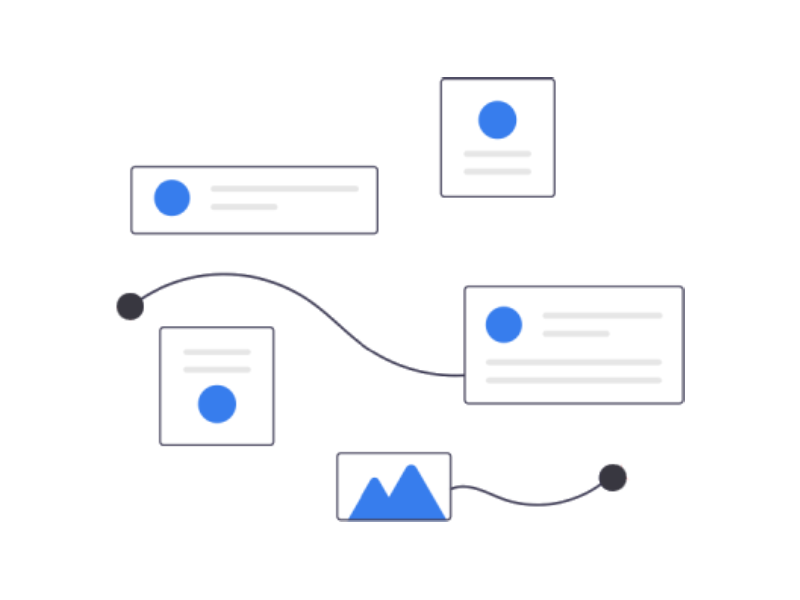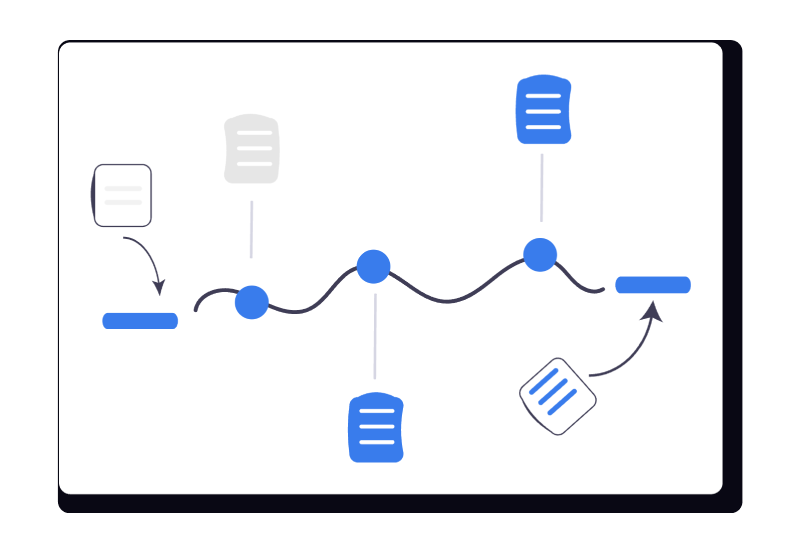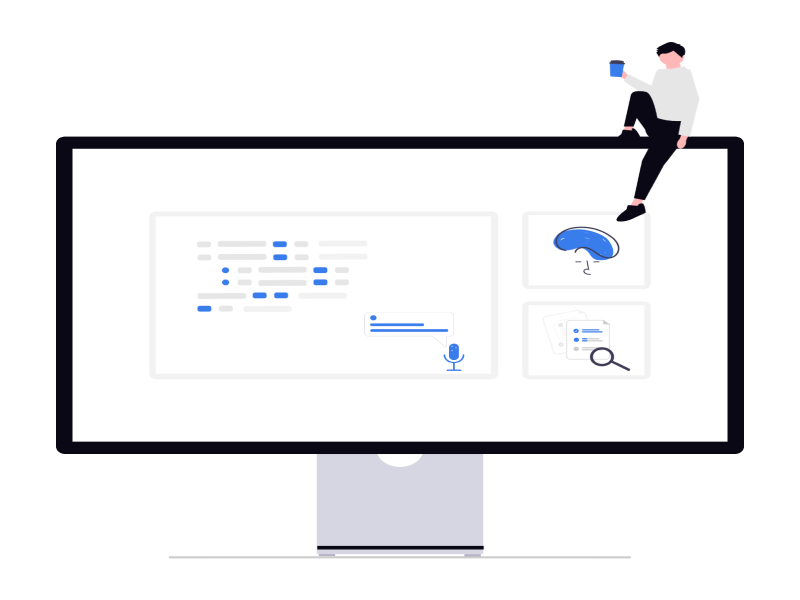Internal links are a vital but often overlooked component of an effective SEO strategy. Properly structuring internal links helps search engines better understand your site architecture, improves crawl efficiency, and passes authority from higher-ranking pages to support the entire site’s rankings.
Implementing best practices for internal linking should be a priority for any website looking to improve organic search performance.
What Are Internal Links?
Internal links are hyperlinks that connect pages within the same domain or subdomain. For example, a link from the homepage to a blog post, one product page to a related product page, or a links from one article to another:
In contrast, external links point users away from your site to another domain. While external links have some SEO value for influencing trust and authority signals, internal links offer more direct SEO benefits.
Types of Internal Links
There are a few core types of internal links to be aware of:
Navigational Links: Menu links, category links, site maps, and other structures helping users navigate your site architecture.

Contextual Links: In-content links connecting related pages or sources to support the current page’s topic. Helpful for users and good for SEO.

Supplementary Links: Additional links such as related posts or products added after the main content. Bring incremental SEO value.

Sponsored Links: Paid placements from site search partners, usually marked nofollow to avoid passing equity.

Footer Links: Links in site footers and sidebars, often navigational. Good for usability, but avoid over-linking.

Pay attention to all types of internal links when structuring an optimization strategy. The way they interconnect should align with search intent and customer patterns.
Why Are Internal Links Important for SEO?
Benefits of Internal Linking for SEO
Well-planned internal linking provides many direct and indirect benefits for organic visibility and traffic.
Direct SEO Benefits
- Higher Rankings Potential – Pages accumulating more quality inbound internal links tend to climb higher for relevant keywords over time as search engines infer greater relevance and authority.
- Topical Relevance – Contextual internal links indicate semantic connections between related content, helping search bots better understand page themes.
- Anchor Text Optimization – Link anchor text provides additional signals about the type of content or product features a link leads to, improving click-through optimization.
- Authority Transfer – Link equity passes ranking power and trust indicators from source pages into connected pages. High authority pages should link supportively into related content.
Indirect SEO Value
- Crawl Efficiency – Interlinked site architecture supports faster crawling by search bots. Crawlers depend heavily on links to discover new pages.
- User Experience – Internal links create a more seamless, intuitively navigable site, keeping visitors engaged longer through discovering related content.
- Conversions – Linking top funnel category and blog content into product or service pages helps visitors segment into conversion pathways based on innate interests.
Supplemental Linking Advantages
- Social Shares – Interlinking related posts helps readers share multiple relevant articles during a visit, compounding social traffic.
- Lower Bounce Rates – Contextual internal links facilitate low-effort discovery of more on-brand content, lowering single-page bounces.
- Dwell Time – Highly interconnected site linking enables longer and more frequent visitor sessions via related content and rabbit-holing.
How Internal Linking Impacts Rankings & Authority
Well-structured internal linking plays an important role in reinforcing relevance and authority signals that influence search rankings over time. Pages effectively pass legitimacy from established high-quality pages into supporting pages covering related topics. It allows authority to compound for more keywords and intents.
For example, a powerful roundup post covering “best dog toys” should link contextually into any related reviews for specific highly rated toy products found earlier in the roundup. It transfers authority and lifts the relevance of those pages for visitors interested further in that dog toy niche.
Conversely, pages deprived of internal link pathways into a site’s main topical link graph struggle to convey relevance on isolated topics. Over time, they risk passing less authority and losing rankings traction compared to better-linked competitors.
The cumulative impact of thoughtful internal linking is clear even without specific quantified data points:
More relevant linkage → More authority transfer → Better rankings results
Common Internal Linking Mistakes & How to Fix Them
Many sites develop internal linking issues over time that undermine SEO visibility, trust signals, and usability. Sure thing, you should diagnose and correct these problems.
Broken Internal Links
Broken links frustrate users when clicking a link leads to a dead-end 404 page instead of working content. They occur when links aren’t updated after removing or renaming pages.
Crawlers also struggle with broken links, sometimes demoting pages in search rankings as a signal of poor quality.

Fix: Audit internal links regularly using online tools to identify and correct broken links automatically or manually. Mark obsolete links nofollow if the destination no longer exists.
Too Many On-Page Links
Stuffing excessive links on a page looks spammy to both search engines and users. Although more internal links have potential SEO value, moderation is key for readability.
As a general guideline, pages shouldn’t exceed 100 total links, with no more than 40-50 internal site links. Having any less than 5-10 internal links also seems sparse from an SEO perspective.
Fix: Refer to your site analytics to identify overly-linked pages. Prune the least relevant links back down to a reasonable range to avoid penalization risks.
Redirect Chains and Loops
Redirect chains happen when pages link into an ongoing sequence of redirects rather than actual content pages. Loops create circular redirect flows endlessly tying back into themselves.
Overly convoluted redirect structures create crawling roadblocks that harm indexation. They also convey uncertainty about whether those pathways lead to quality content.
Fix: Audit site redirects to identify wasteful chains and loops divert back to actual content sooner in the flow. Consolidate specific use cases for redirects using site search.
Misuse of Temporary Redirects
Temporary 301 redirects indicate current pages that will point somewhere new in the future. Search engines prefer permanent architecture changes and use 301s sparingly only for short-term, temporary transitions.
Overusing 301s undermines site stability signals and wastes crawler resources checking speculative redirects. Pages also risk passing less value through chains of multiple 301 hops.
Fix: Audit all temporary redirects implemented via 301 status codes. Switch the status code to 302 for temporary needs like A/B testing. For ongoing, permanent site changes, update links directly or use 308 redirects.
Overuse of Permanent Redirects
The 308 redirect introduced in 2018 modernized 301 behavior by preventing unintended redirect chains. Unlike the classic 301 status, 308s only pass signals once and then resolve to the endpoint.
Still, both types of permanent redirect should be used thoughtfully and sparingly. Overzealous redirection complicates site architecture. It also passes authority indirectly rather than keeping it on strong pages that directly match the searcher’s intent.
Fix: Audit existing redirects to identify unnecessary or wasteful flows diverting users and crawlers through unideal pathways. Eliminate pointless hops by linking directly to the appropriate destination when feasible.
Nofollow Attributes in Internal Links
The nofollow link attribute tells crawlers not to pass any equity or relevance signals through that link and only use it for discovery. It prevents passing authority to unnecessary pages.
However, adding nofollows to internal links negates their SEO-enhancing benefits for spreading rankings potential across your site. It also hides the contextual connections from search engines.
Fix: Internal links generally shouldn’t use nofollow unless pointing to paid ads or entirely unrelated resources deprioritized temporarily. An overabundance of nofollows sabotages internal SEO architecture.
Orphan Pages
Orphan pages have no inbound internal links, leaving them disconnected and hidden from internal navigation on your site. Users and crawlers struggle to discover orphaned pages.
These pages, left orphaned indefinitely, waste the potential to enhance your site’s breadth of keywords and topics covered. They also represent neglected content.
Fix: Regularly review site structure and identify orphaned pages isolated from other internal links. Connect relevant orphan pages into site navigation flows with contextual internal links to help exposure and strengthen surrounding topics.
Pages with Too Few Incoming Internal Links
Just as excessively linking a single page invites skepticism, so does an extreme lack of internal links tied to individual pages. Even good-quality pages rely on internal reinforcement signals to boost relevance and context.
Ideally, aim for at least 10-20 contextual internal links into strong priority pages on your site if the content and topics warrant it.
Fix: Using analytics and search metrics, find pages with high-value content but much lower than expected rankings and referral traffic. Diagnose connectivity by evaluating the page’s inbound link profile compared to competitors and site averages. Expand internal links appropriately based on the content and user patterns.
Misuse of Anchor Text
Optimize anchor text to convey to search engines the context and topic for that specific link. However, overly-constructed, exact-match anchor text raises red flags as manipulative or spammy. Your internal link anchors should feel naturally relevant to users first rather than tuned only for crawlers.
Fix: Diversify internal link anchor text across pages connecting into the same destination. Striving for more than 20-30% coverage from any single wordy anchor phrase appears unnaturally optimized. Integrate a variety of contextual anchors describing the same target with keywords and readable phrases.
Irrelevant Links
Any links feeling irrelevant or out-of-place will confuse search engines about why pages relate or don’t relate. Even contextual links can raise questions by connecting disjointed concepts too aggressively through site architecture.
Fix:
– Audit existing internal links for relevance, removing any unnecessary or irrelevant connections.
– Pay special attention to links between disparate topics that form jarring or confusing user experiences when clicked.
– Replace where needed with contextually relevant internal links suggesting logical relationships.
Internal Linking Best Practices for SEO
Beyond diagnosing existing issues, smart internal link practices should become part of your site’s DNA as you create and curate content. Here are the effective strategies to integrate:
Keywords in Anchor Text
As highlighted earlier, exact-match anchor text feels spammy when overdone. However, relevant target keywords woven naturally into contextual anchor text provide useful signals for search engines without sacrificing readability.
See this contextual example:
Improve organic traffic and visibility using SEO [internal linking best practices] tailored to your content and site architecture.
The bracketed anchor text incorporates relevant keywords but stays contextual and readable. It optimizes without excess keyword stuffing.
Relevant, Contextual Internal Links
The best quality internal links connect pages contextually by topic or intent flows. Analyze site content and structure around customer patterns to identify relevant linking opportunities.
For example, linking blog category pages to related blog posts enhances overall topic clusters. Or linking product specification sheets inside related product comparison articles.
These contextual links should pique reader interest rather than distract from site experience and content.
Link Traffic Pages into Conversion Pages
Higher-traffic category and overview pages tend to rank more easily based on popularity signals and external links. Ensure these pages connect visitors further into conversion-focused pages using contextual internal links.
For example, link from popular gear review category pages directly to unique product pages for items where you want to drive more conversion volume based on proven visitor interest.
Update and Optimize Old Content
When you optimize and refresh existing pages on a site, leverage the opportunity to improve internal links as well. Connect revamped evergreen content internally into related new pillar content to spread authority and relevance into pages needing a refreshed boost. Repurpose curated related post sections to link contextually into the newly updated pages.
Compare Competitor Linking
Leverage SEO tools like Ahrefs to reverse engineer successful competitor site’s internal link profiles and structures.
Analyze the average number of internal links per page on competitor sites, along with proportional linking between types of pages. Such as ratios between:
- Homepage links to key category pages
- Category-to-product description ratios
- Blog category to blog post connectivity rates
- Links bridging blog versus e-commerce sections
Compare across both direct competitors and aspirational brands with strong organic visibility. Adapt and apply relevant lessons for better internal link building suited to your site architecture and content catalog.
Continually revisit competitor internal link analysis to additional pages and sections as each site’s content catalogs evolve over time.
Internal Link SEO Tools
With a solid grasp of internal linking best practices now, use the right tools to accelerate audits, analysis, and optimizations leveraging automation:
Screaming Frog
The leading SEO crawler allows filtering site crawls to export detailed internal linking data. Isolate broken links, orphan pages, redirect chains, pages suffering connectivity issues, and opportunities to selectively boost pages with more contextual internal links. Custom site visualizations also show internal architecture and equity pass rates.

Ahrefs
While best known for backlink data, Ahrefs also indexes internal link profiles. The Link Intersect visualization maps inner connectivity between pages and domains. Compare internal link stats against competitor sites to inform better linking structures aligned with leaders in your space.

Google Search Console
Search Console aggregates internal links specifically from what Googlebot crawled and indexed. Connectivity issues directly hindering Google rankings tend to show here. The Links report also calculates page-level authority transfer rates to fine tune distribution.

Lumar
This AI-powered crawler acts like an automated site auditor, flagging broken links, crawl errors, duplicate content issues, and metadata gaps. Lumar ranks page optimization maturity while recommending high-impact internal link improvement opportunities.
Botify
Specializing in enterprise-scale site audits, Botify crunches a site’s internal architecture, detecting crawl budget inefficiencies and major linkage gaps restraining pages from reaching full rankings potential. The platform predicts content performance if connectivity issues get addressed via targeted internal links.
Internal Linking FAQs
How many internal links should be on a page?
There are no absolute rules, but roughly 10-20 well-placed contextual links per page seem optimal for SEO. More than 50 internal links risk clutter and credibility issues. Any less than 3-5 links feel sparse unless the content warrants it.
Which Pages Should You Link to?
Look to link internally between pages relevant to similar user experiences. It might mean connecting category landing pages to key product pages, blog topic pages to related blog posts, or website pages to related service content.
How do I find internal links?
Website crawler tools identify internal links pointing to or from any target URL. You can also download a page source report while manually reviewing pages for link tags. If needed, use advanced analysis tools providing a visual site architecture mapping of page interconnectivity.
Are internal links the same as backlinks?
No. Backlinks refer exclusively to external sites linking in, which are important for off-page SEO signals of awareness and trust. Internal links connect pages inside your own domain, optimizing architecture and authority flow to improve on-page signals and organic visibility.
Wrap-up
Internal links serve a key role in energizing website findability, engagement, and conversions through organic search. Invest in continually optimizing this high-impact aspect of on-page SEO architecture.







